
The poor misunderstood twin tenon joint. The Internet seems fraught with dubious ways of cutting it and impractical uses for it. So what is it good for, and how do you cut the tricky thing? Well, traditionally, the most common use of a twin tenon joint is to connect drawer rails “on the flat” to table legs or cabinet stiles the form I’ll focus on here, and the one I used in the side table on page 32.
Typically, the glue-strength of any joint depends upon sufficient intimate contact between its adjoining long-grain surfaces. In the case of a connection like this, a single tenon would provide minimal contact. So the main purpose of a twin-tenon joint is to double the long-grain glue surface. But the joint can be tricky to cut well. Unlike a single tenon, which can be sawn a bit fat, and then trimmed to a perfect fit with a shoulder plane, the inner cheeks here can’t be planed, and are hard to chisel perfectly.
After trying many methods, I’ve found that using spacers consistently yields a perfect or near-perfect joint every time. I’ll show you how to make the most common form of a twin tenon joint to demonstrate the system. You can then apply it to other configurations using the appropriate spacers. In addition to a hollow chisel mortiser, all you need is a tenon jig and a good quality dado head for your table saw.
Spacers and mortises first
A perfect start. The trick to a perfect joint begins by planing spacer material to perfectly fit a groove cut by the dado head that will be used to make the tenon cuts.
この記事は Woodcraft Magazine の August-September 2020 版に掲載されています。
7 日間の Magzter GOLD 無料トライアルを開始して、何千もの厳選されたプレミアム ストーリー、9,000 以上の雑誌や新聞にアクセスしてください。
すでに購読者です ? サインイン
この記事は Woodcraft Magazine の August-September 2020 版に掲載されています。
7 日間の Magzter GOLD 無料トライアルを開始して、何千もの厳選されたプレミアム ストーリー、9,000 以上の雑誌や新聞にアクセスしてください。
すでに購読者です? サインイン
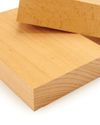
Beech
Plain looks, but a solid performer
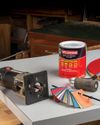
Working with PLASTIC LAMINATE
Adding a durable, smooth, and colorful surface to your work
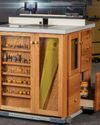
High-Tech ROUTER TABLE
A state-of-the-art shop essential

Albers-Inspired NESTING TABLES
A colorful array of Bauhaus utility

Desktop ORGANIZERS
Mini modules for your modern workspace

Joiner's MALLET
A hard-hitting shop hammer
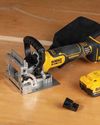
Battery-backed biscuiting
DeWalt 20V Max XR Biscuit Joiner
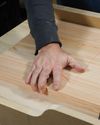
Crosscut SLED
A basic build of a crucial table saw accessory
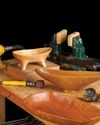
Power-carving BOWLS
Tools and techniques for sculpting

Library STEPS
Mitered box joints give rise to an updated classic